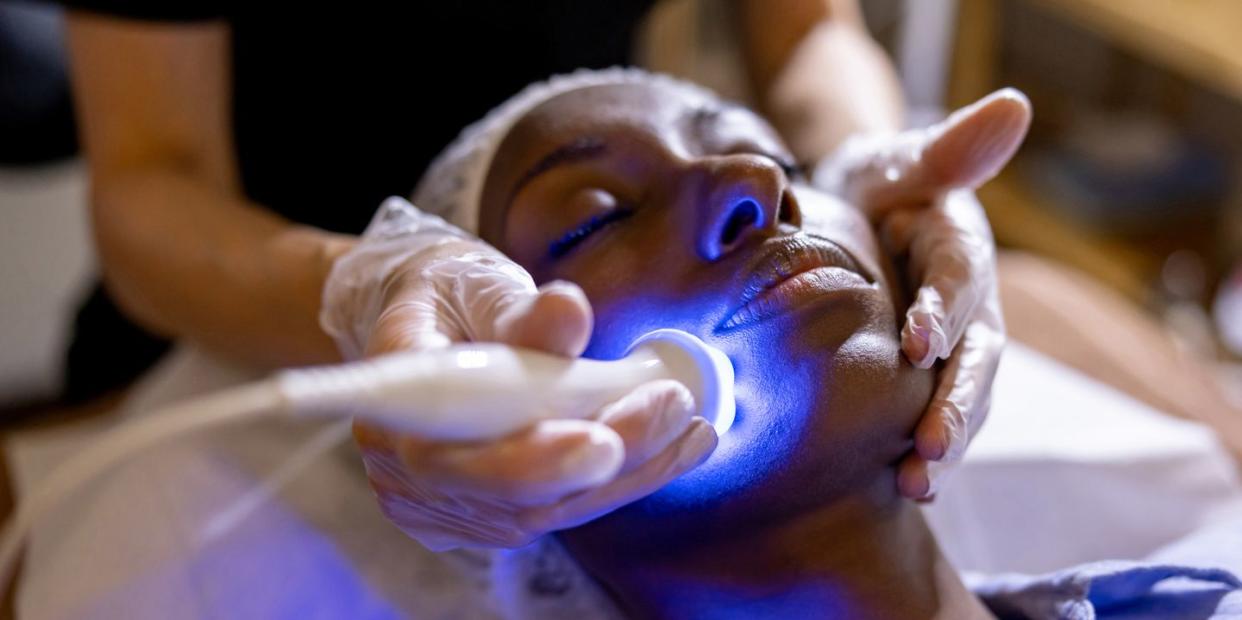Here's how to tell if your beauty therapist is properly qualified

Unfortunately, the beauty industry can be known for its botch jobs as much as its brilliance, something that relates in large to it being unregulated. Perhaps shockingly, this lack of legislation means that anyone with little or no training can establish themselves as a seemingly professional therapist. And many of us let them wax, laser, inject and chemically treat our hair, face and bodies without asking for evidence of expertise – and only questioning insurance policies should things go wrong.
According to a recent survey conducted by the Beauty Backed Trust – which supports businesses and entrepreneurs within the hair and beauty sectors – more than 90 per cent of us don’t feel comfortable asking to see a therapist’s qualifications. This is despite almost all of us believing that the industry should be regulated and that there should be a recognisable certification applied to training.
Until that day comes, the British Association of Beauty Therapy and Cosmetology (BABTAC) wants to signpost us all to safety in salons, spas and clinics. The organisation’s new initiative, T.I.M.E, encourages therapists and practitioners to demonstrate that they’re qualified, verified and insured, as well as suggesting that the people booking their services demand that they are.
The campaign, supported by MPs, several influential bodies and key figures across the industry, essentially provides a regulatory checklist for consumers. You might want to ask about these at your next beauty booking:
Training – what training and qualifications, including continual professional development (CPD) does the therapist (and their staff) have?
Insurance – are they insured, and by who?
Monitoring – do they carry out pre- and post-appointment processes, such as patch testing, sufficient consultations and aftercare?
Evidence – can they provide certified proof of training and insurance, as well as client testimonials?
While swallowing some typically British pride to ask for proof of qualifications is one thing, knowing what to look for when it comes to the evidence is another. Indeed, the same study found that 71 per cent of us wouldn’t know the difference between a regulated qualification and a non-regulated short course, so you’re not alone if you’re wondering where to start.

Frustratingly, “there is no simple answer here,” Lesley Blair MBE – BABTAC’s CEO and chair – tells Harper’s Bazaar, confirming that “assessing genuine fit for purpose qualifications and certificates can be exceptionally difficult for consumers”.
“However, any Ofqual-regulated qualification certificate – which is government-regulated and mapped across to a National Occupational Standard (NOS) and can only be provided by an Awarding Organisation (AO) – should always be fit for purpose, provided that the correct qualification is done for the treatments that the therapist wishes to perform.” Here, look out for the Ofqual and Awarding Organisation logos on certificates.
In addition, BABTAC has a wide range of pre-requisite training requirements for different treatments here, which is easy to reference. It lists the training deemed as necessary to perform treatments safely and professionally.
As Caroline Hirons, industry expert and founder of the Beauty Backed Trust hopes, “The T.I.M.E. initiative will help to elevate this valuable industry, while empowering consumers to understand how to safely identify trained professionals when choosing their treatments”. Knowledge is always power.
You Might Also Like

 Yahoo Movies
Yahoo Movies 
